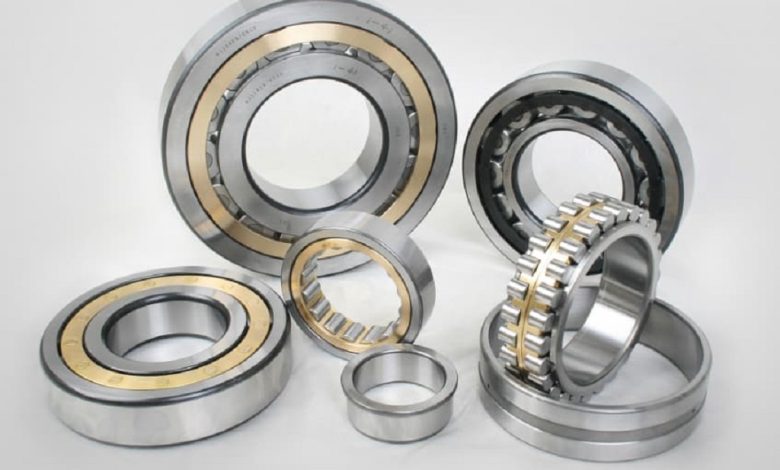Power Supply Fan Bearing Types Comparison: Which One Lasts the Longest?

A power supply unit (PSU) is the heart of any computer, converting AC power into the necessary DC voltage for your components. But one often-overlooked factor affecting PSU performance and longevity is the fan bearing type. The type of bearing used in the PSU fan plays a critical role in cooling efficiency, noise levels, and lifespan. Choosing the wrong bearing type can lead to overheating, increased noise, or even premature failure. Before diving into the different fan bearing types, it’s essential to explore Ask For Files to gain deeper insights into PC hardware and cooling solutions. This guide will compare the most common power supply fan bearing types, analyzing their advantages, disadvantages, and real-world performance. Whether you’re building a high-performance gaming rig or a silent workstation, understanding these differences can help you make an informed decision.
Why Power Supply Fan Bearings Matter
The PSU fan keeps internal components cool, preventing overheating and extending the unit’s lifespan. However, not all fans are created equal. The bearing inside determines:
- Lifespan: Some bearings wear out faster than others.
- Noise Levels: Different bearings produce varying amounts of noise over time.
- Efficiency: The right bearing improves airflow and cooling.
Choosing the right bearing ensures your PSU operates efficiently, remains quiet, and lasts longer. To understand this better, check out a detailed guide on here: https://ask4files.com/2022/12/02/how-to-install-power-supply-fan-up-or-down/.
Types of Power Supply Fan Bearings
1. Sleeve Bearings: Affordable but Short-Lived
Overview:
Sleeve bearings are the most budget-friendly option found in lower-cost PSUs. They consist of a lubricated metal sleeve that reduces friction between moving parts.
Pros:
- Affordable: Cheapest bearing type, lowering PSU costs.
- Quiet (Initially): Produces minimal noise when new.
Cons:
- Short Lifespan: Typically lasts 30,000 hours under ideal conditions.
- High Wear Rate: Lubrication degrades over time, leading to increased friction.
- Poor Performance in High Temperatures: Heat accelerates wear and failure.
Best Use Case:
- Entry-level or budget PC builds where longevity isn’t a priority.
2. Ball Bearings: Durability at a Higher Cost
Overview:
Ball bearings use small metal balls to reduce friction, providing better longevity and efficiency than sleeve bearings.
Pros:
- Long Lifespan: Can last 50,000-70,000 hours under optimal conditions.
- Better Heat Resistance: Performs well in high-temperature environments.
- Reliable for Continuous Use: Less degradation over time.
Cons:
- Noisier than Sleeve Bearings: Ball bearings create more friction, increasing sound levels over time.
- Higher Cost: Typically found in mid-to-high-end PSUs.
Best Use Case:
- Gaming PCs, workstations, and systems running for extended hours.
3. Fluid Dynamic Bearings (FDB): A Balance of Performance and Silence
Overview:
Fluid Dynamic Bearings (FDB) use oil-based lubrication to reduce friction, resulting in quieter operation and extended longevity.
Pros:
- Extremely Quiet: Produces very low noise levels.
- Extended Lifespan: Can exceed 100,000 hours under ideal conditions.
- Efficient Cooling: Offers better stability and heat resistance.
Cons:
- More Expensive: Costs more due to advanced technology.
- Requires Proper Orientation: Some FDB fans lose efficiency if mounted incorrectly.
Best Use Case:
- Silent PC builds, premium gaming rigs, and professional workstations.
4. Magnetic Levitation (MagLev) Bearings: The Cutting-Edge Choice
Overview:
MagLev fans use magnetic fields to suspend the fan rotor, eliminating direct contact between moving parts.
Pros:
- Ultra-Long Lifespan: Often exceeds 150,000 hours due to minimal wear.
- Virtually Silent: No friction, leading to extremely quiet operation.
- Superior Durability: Handles high temperatures and continuous use with ease.
Cons:
- Most Expensive Option: Found only in high-end PSUs.
Best Use Case:
- Enthusiast-level builds, servers, and mission-critical systems.
Which Bearing Type is Best for Your Needs?
If you’re prioritizing budget, a sleeve-bearing fan is sufficient. But if you need reliability and longevity, ball bearings or FDB fans are better. For premium, silent builds, MagLev bearings are the top choice.
Comparing Fan Bearing Lifespans
| Bearing Type | Expected Lifespan (Hours) | Noise Level | Cost |
| Sleeve Bearing | ~30,000 | Low (Initially) | Low |
| Ball Bearing | 50,000 – 70,000 | Moderate | Medium |
| Fluid Dynamic Bearing (FDB) | 100,000+ | Very Low | High |
| Magnetic Levitation (MagLev) | 150,000+ | Virtually Silent | Very High |
Installation Considerations: Power Supply Fan Up or Down?
When installing a PSU, many wonder about the best orientation. Should the power supply fan up or down? This depends on airflow and case design. If your case has a vent at the bottom, placing the fan downward helps draw in cool air. However, in cases without bottom ventilation, an upward-facing fan may be necessary.
Real-World Performance: Which PSU Brands Use the Best Bearings?
Leading PSU manufacturers like Seasonic, Corsair, and EVGA use FDB or MagLev fans in their high-end models, ensuring long-term reliability. Budget brands often use sleeve or single-ball bearing fans to cut costs.
PSUs with High-Quality Bearings
- Seasonic Prime Titanium Series – FDB Fans
- Corsair AX Series – MagLev Fans
- EVGA SuperNOVA Series – Dual Ball Bearing Fans
Final Verdict
- For budget users: Sleeve bearings may suffice but expect a shorter lifespan.
- For mid-range builds: Ball bearings provide a good balance of cost and durability.
- For high-end silent PCs: FDB fans are the best mix of quietness and longevity.
- For enthusiasts and professionals: MagLev bearings offer the best performance and reliability.
When selecting a PSU, don’t just look at wattage and efficiency ratings—pay attention to the fan bearing type as well. Compare power supply fan bearing types and discover which lasts longest. A better bearing means a quieter, longer-lasting PSU, keeping your system cool and reliable for years to come. How to boost performance? Change MSI monitor refresh rate for smoother visuals.




